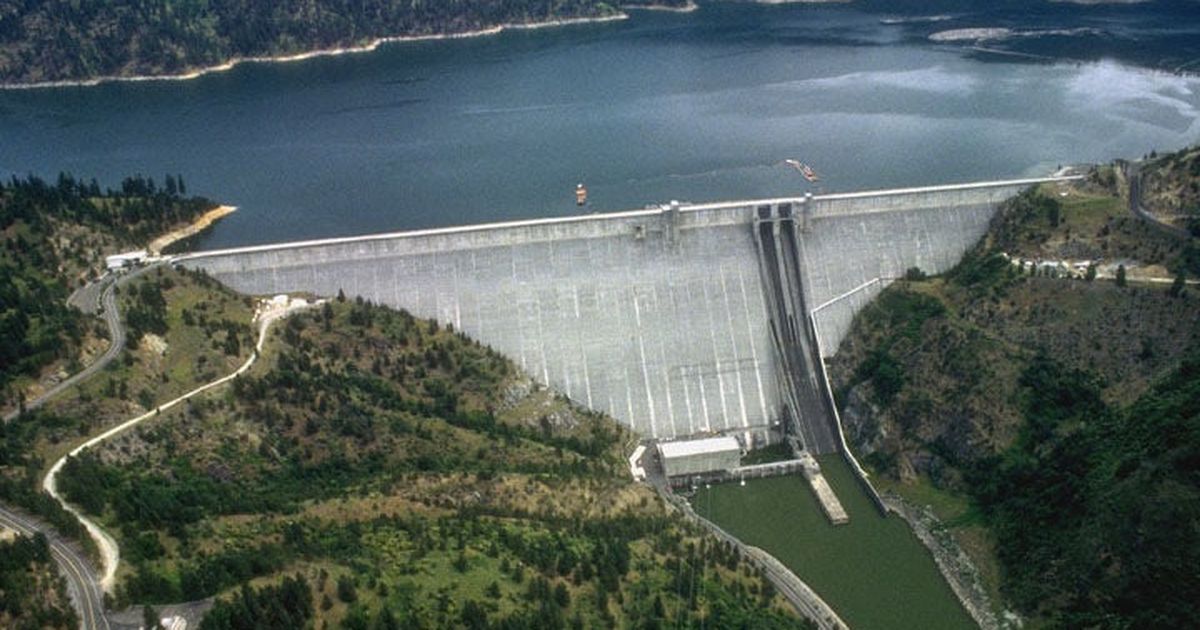When I was in high school, I fished for steelhead trout in the North Fork Clearwater River in Idaho, long before the Dworshak Dam was completed on that river in 1973. The 700-foot-high dam impounded water for 54 miles, creating Dworshak Reservoir in a long, deep canyon lined with Douglas firs and ponderosa pines. Slowly, the water rose to the top of the dam, creating depths of up to 650 feet and forever killing the steelhead trout schools up the North Fork.
About a dozen species of fish were already present in the river system when it was dammed, and after the large reservoir was filled, smallmouth bass and redfish were introduced. The two species have merged to create a self-sustaining smallmouth bass fishery that is unparalleled in the Western United States, rivaling even the well-known Boundary Waters of Minnesota and the waters of Lake Erie and Lake Michigan.
The steelhead were still around on the North Fork below the dam and in the Clearwater itself, and I continued fishing for them in the 1980s, but I had started hearing stories of smallmouth bass in the reservoir that were so fat they looked like footballs and tipped the scales over seven pounds. Reluctant at first, my focus eventually shifted from steelhead to bass. I had spent some action-packed days fishing for smallmouth bass on the Snake River and also below Grand Coulee Dam, and the 2-pound smallmouth bass I caught there were a handful on light gear. I couldn’t imagine what a 7-pounder would look like.
The first time I fished Dworshak Reservoir, I caught a 4-pound smallmouth bass at the mouth of Elk Creek and lost another that seemed twice as big off the boat. Later that same day, I spoke with an Idaho fish biologist who told me that many smallmouth bass in Dworshak Reservoir that were much larger than the ones I had caught were dying of old age.
It was a fishing area I couldn’t ignore.
The smallmouth bass fishery on Dworshak is closely linked to the robust kokanee (landlocked salmon) population. A nutrient restoration program has resulted in an increase in Daphnia zooplankton, the kokanee’s primary food. More food means more and bigger kokanee, and more kokanee means more bass. Kokanee die after spawning, and it takes a few years for those that remain to replenish the lake with the smallmouth bass’ preferred high-energy, high-growth food. When the kokanee population declines, the bass won’t get as big. While there will still be a good number of big bronzebacks, there won’t be as many and the coming harvest will be smaller. This situation occurs when an expected high rainfall in early spring prompts the Corps of Engineers to flush huge amounts of water through the dam in preparation for the coming flood. This literally flushes thousands of kokanee salmon that would have spawned in the fall out of the system because, unlike bass, they float in deep water and are not protected by structure.
Shallower waters along the shores of Dworshak Reservoir are nearly covered with smallmouth bass in the summer. Even a novice angler with an inexpensive rod and reel and a tube jig or curly-tail will have no problem catching and releasing 30 or more 9- to 12-inch fish in a morning, even from shore. Idaho Fish and Game recommends anglers take home their six-fish limit of smaller smallmouth bass, because bass under 12 inches grow slowly and removing some of these fish means more food for everyone.
Most of the large black bass in the Dworshak are caught in early spring, when the fish feed aggressively before spawning and the water temperature has risen above 10 °C. Fish weighing 2.5-3.0 kg are common. However, after spawning, the large fish move to deeper waters and are replaced by large numbers of smaller fish in the shallows near the river mouths and along the rocky shores.
The big fish — like the 9½-pounder caught by Lewiston teenager Quinten Kelly in early April 2016 — are generally deeper and more finicky. Kelly’s fish was measured and released. At 24½ inches long, it was just ounces shy of Dan Steigers’ Idaho record, which is 9.72 pounds. He pulled the fish from Dworshak in 2006. The state’s catch-and-release record also comes from Dworshak — a 23¾-inch smallie caught by Joey Walton in 2022.
The world record largemouth bass was caught by David Hayes in 1955 in Dale Hollow Lake, Tennessee. It weighed 11 pounds, 15 ounces and was trolled using a pearl white bomber.
And although numerous fish weighing over 10 pounds have been caught in Dale Hollow, the last one of that size was caught in 1986.
Dworshak Reservoir is a relatively young body of water, and the best may be yet to come. If the water doesn’t flush as hard for several springs in a row, giving the kokanee a chance to spawn and grow, many biologists believe the next world-record largemouth bass will be caught there.

